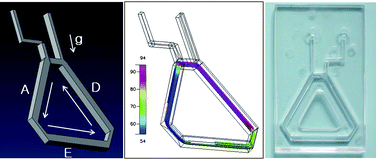A palmtop PCR system with a disposable polymer chip operated by the thermosiphon effect†
Abstract
A small thermocyling system to perform

* Corresponding authors
a
BioMEMS Team, Electronics and Telecommunications Research Institute (ETRI), 138 Gajeong-no, Yuseong-gu, Daejeon, Republic of Korea
E-mail:
tabby@etri.re.kr
Fax: +82-42-860-6594
Tel: +82-42-860-5326
b Nanomedicine and Biomaterial Laboratory, Gwangju Institute of Science and Technology (GIST), 261 Cheomdan-gwagiro, Buk-gu, Gwangju, Republic of Korea
A small thermocyling system to perform

 Please wait while we load your content...
Something went wrong. Try again?
Please wait while we load your content...
Something went wrong. Try again?
K. H. Chung, S. H. Park and Y. H. Choi, Lab Chip, 2010, 10, 202 DOI: 10.1039/B915022F
To request permission to reproduce material from this article, please go to the Copyright Clearance Center request page.
If you are an author contributing to an RSC publication, you do not need to request permission provided correct acknowledgement is given.
If you are the author of this article, you do not need to request permission to reproduce figures and diagrams provided correct acknowledgement is given. If you want to reproduce the whole article in a third-party publication (excluding your thesis/dissertation for which permission is not required) please go to the Copyright Clearance Center request page.
Read more about how to correctly acknowledge RSC content.
 Fetching data from CrossRef.
Fetching data from CrossRef.
This may take some time to load.
Loading related content
